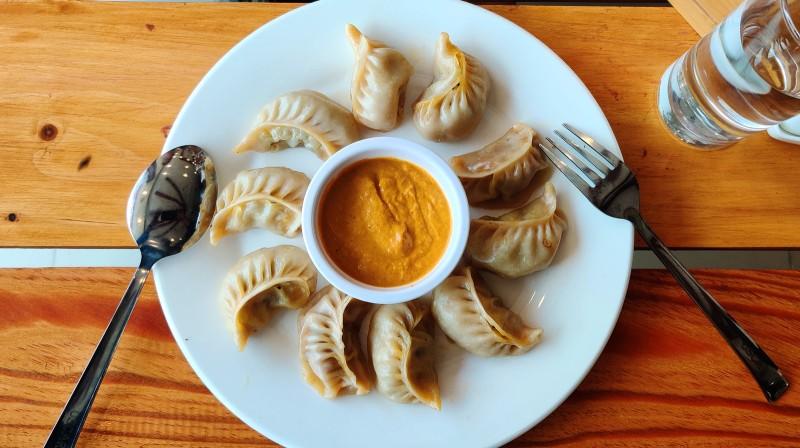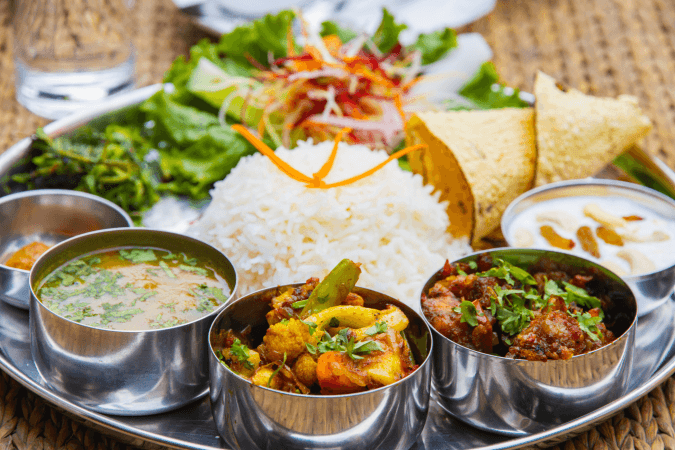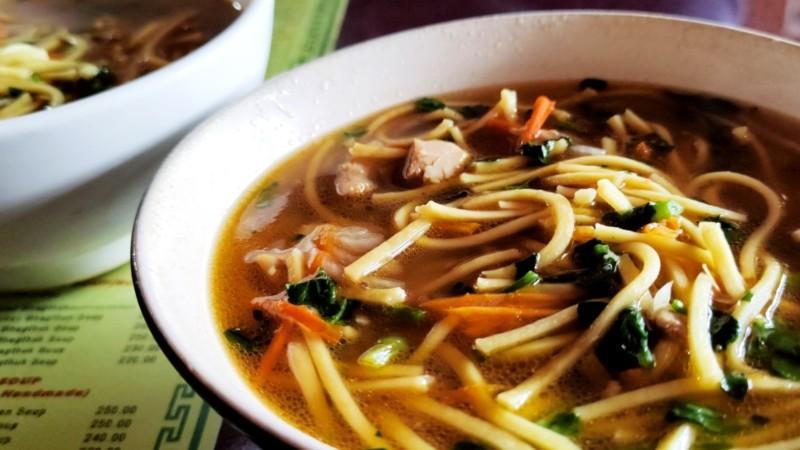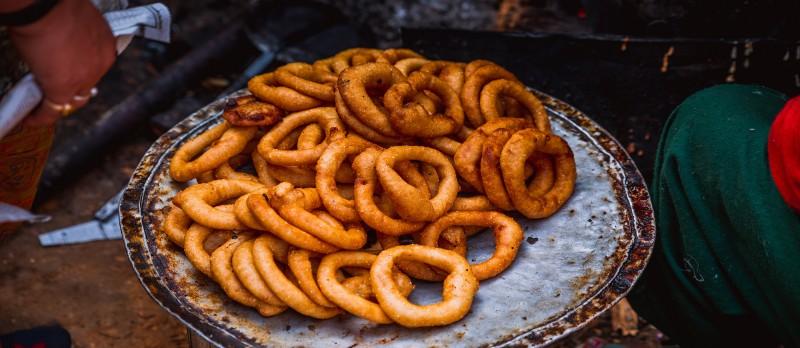Savoring Nepal: A Culinary Journey Through the Land of Mountains
Perched on a rooftop café in Kathmandu, the early morning sun paints the distant Himalayas in hues of gold and pink. The aroma of freshly brewed chai wafts through the air, signaling the start of a gastronomic adventure that will take you from the bustling streets of the capital to the remote mountain villages of Nepal. Welcome to Tweet Tours' guide to Nepal's must-try dishes – a journey that will tantalize your taste buds and leave you with a deeper appreciation for this country's rich culinary heritage.
Nepal

A Culinary Journey
“Nepali cuisine is one of the healthiest in Asia because it is based on the complex integration of Ayurvedic medicine. Vegetables, herbs and spices are used according to the season and their benefit to the body. The root of our meals is a balanced combination of vegetables, pulses, grains and seeds.” – Santosh Shah, reporter at Wanderlust Magazine.
The Heartbeat of Nepalese Cuisine: Dal Bhat
No exploration of Nepalese food would be complete without diving into the nation's culinary cornerstone: Dal Bhat. This seemingly simple dish is the lifeblood of Nepal, fueling everyone from busy office workers to intrepid Himalayan trekkers. A steaming mound of fluffy white rice (bhat) sits surrounded by a constellation of small bowls, each containing a different delicacy. The star of the show is the dal – a hearty lentil soup that's as varied as Nepal's landscapes.
But Dal Bhat is more than just a meal; it's a cultural institution as TasteAtlas ranking it one of Nepal's most popular meal. Its origins trace back centuries, evolving from the need for a nutritious, easily prepared meal that could sustain farmers working long days in the fields. Over time, it became a unifying dish across Nepal's diverse ethnic groups, each adding their own regional twists.
In the Terai lowlands, Dal Bhat might feature a spicy tomato-based dal and a side of fried Himalayan nettles. Venture into the hills of the Annapurna region, and you'll find a thicker dal made with black lentils, accompanied by tender local spinach. In the high Himalayan valleys, yak meat might make an appearance, providing much-needed protein for the harsh mountain environment.
As you savor your Dal Bhat with Tweet Tours, you're not just enjoying a meal – you're participating in a daily ritual that connects you to every Nepali, from the bustling streets of Kathmandu to the highest Sherpa villages. It's a dish that embodies the Nepali spirit of simplicity, sustainability, and community.

Momo Mania: Nepal's Beloved Dumpling
If Dal Bhat is the heart of Nepalese cuisine, then momos are its soul. These plump, juicy dumplings have achieved near-mythical status, beloved by locals and visitors alike. You'll find them steamed, fried, or swimming in a rich broth, filled with everything from minced water buffalo to finely chopped vegetables.
The best place to experience momo madness is in the narrow alleys of Kathmandu's Thamel district. Here, follow your nose to a hole-in-the-wall shop where a team of skilled cooks hand-roll and fill each dumpling with practiced precision. The sizzle of the pan and the hiss of steam create a mouthwatering symphony.
But momos are more than just street food – they're a testament to Nepal's position at the crossroads of cultures. Believed to have originated in Tibet, momos made their way into Nepal with traders and settlers crossing the Himalayas. Over time, they were adapted to local tastes and ingredients, becoming a distinctly Nepali dish.
In Kathmandu, you might find momos filled with spiced chicken and served with a fiery tomato achar. Travel to Pokhara, and you could encounter unique variations like kodo ko momo, made with buckwheat flour and stuffed with local cheese. In the mountain town of Namche Bazaar, gateway to Everest, yak meat momos offer a high-altitude twist on this beloved snack.
With Tweet Tours, you'll have the opportunity to not just eat momos, but to learn the art of making them. Join a local family for a momo-making class, where you'll learn to mix the dough, prepare the filling, and master the delicate art of pleating each dumpling. It's a hands-on experience that connects you to the heart of Nepali culture, one dumpling at a time.

Thukpa: A Himalayan Hug in a Bowl
As you venture into the higher reaches of Nepal, the air gets thinner, and the need for warming, substantial fare becomes crucial. Enter thukpa, a hearty noodle soup that's like a comforting hug from the Himalayas themselves.
Originating in Tibet but embraced wholeheartedly by Nepal, thukpa is a masterclass in turning simple ingredients into something extraordinary. Long, chewy noodles swim in a rich broth alongside tender pieces of meat (yak is traditional, but chicken is common) and a medley of vegetables.
Thukpa's story is one of adaptation and survival. In the harsh mountain environment, where fresh ingredients are scarce and the cold is biting, thukpa evolved as a way to create a filling, nutritious meal from limited resources. The soup's warmth and high carbohydrate content make it ideal for combating altitude sickness and providing energy for high-altitude treks.
As you climb higher with Tweet Tours, you'll notice how thukpa changes. In the lowlands, it might be light and fragrant, perfumed with ginger and garlic. But as you ascend, the soup becomes heartier. In the Khumbu Valley, home to Mount Everest, thukpa takes on a almost stew-like consistency, packed with root vegetables and yak meat to fortify trekkers and climbers.
In the remote village of Thame, birthplace of Tenzing Norgay, Tweet Tours arranges a special thukpa experience. Here, in a traditional Sherpa home, you'll learn to make thukpa the way it's been prepared for generations. As you chop vegetables and knead dough for the noodles, your host will share stories of life in the high Himalayas, where thukpa isn't just food – it's survival.

Sel Roti: Nepal's Answer to the Donut
For those with a sweet tooth, Nepal offers a unique treat that's part bread, part dessert, and entirely delicious. Sel roti is a ring-shaped bread that's crispy on the outside, soft and slightly sweet on the inside, and utterly addictive.
Made from rice flour, milk, and sugar, the dough is expertly fashioned into rings and deep-fried to golden perfection. The result is a treat that's traditionally enjoyed during festivals but has become so popular you can find it year-round.
Sel roti's origins are as intriguing as its taste. Legend has it that this unique bread was created centuries ago in the royal kitchens of the Malla kings, who ruled the Kathmandu Valley from the 12th to the 18th centuries. The ring shape was said to represent the eternal cycle of life, making it a popular offering during religious ceremonies.
Today, sel roti remains an integral part of Nepali festivals, particularly Tihar (the festival of lights) and Maghe Sankranti (the winter solstice celebration). During these times, the streets of Kathmandu fill with the irresistible aroma of frying sel roti, as families prepare batches to share with neighbors and offer to the gods.
In the ancient city of Bhaktapur, known for preserving traditional Newari culture, you'll visit a local home during Tihar. Here, amidst the glow of oil lamps and the sound of festive music, you'll learn the art of sel roti making. From mixing the perfect dough to mastering the technique of forming the rings freehand, it's a hands-on experience that connects you to centuries of Nepali tradition.

A Toast to Tradition: Raksi and Chyang
No culinary journey through Nepal would be complete without raising a glass of the local libations. Raksi, a potent spirit distilled from millet or rice, is not for the faint of heart. It's often homemade, varies wildly in strength, and is an integral part of many social gatherings and religious ceremonies.
For a gentler experience, try chyang, a mild rice beer that's slightly sweet and refreshingly effervescent. It's often served in traditional Newari households in Kathmandu Valley, where it's drunk from small clay pots called salincha.
These traditional drinks offer a fascinating glimpse into Nepal's cultural and religious practices. Raksi, for instance, plays a crucial role in many Hindu and Buddhist rituals. During weddings, it's used to seal the union between families. In remote mountain villages, it's offered to appease local deities and ward off evil spirits.
Chyang, on the other hand, is deeply intertwined with the festivals and daily life of the Newari people, the original inhabitants of the Kathmandu Valley. During Newari feasts, known as bhoj, chyang flows freely, symbolizing hospitality and community bonds.
In Kathmandu, you'll be invited to a traditional Newari home to experience a jila bhoj, a feast celebrating the rice harvest. Here, seated cross-legged on straw mats, you'll sip chyang from a traditional salincha while enjoying course after course of Newari delicacies. It's more than just a meal – it's a cultural immersion that allows you to experience Nepali hospitality at its finest.

Embracing the Adventure
As you journey through Nepal with Tweet Tours, remember that each dish is more than just sustenance – it's a window into the country's soul. From the humblest dal to the most complex festival feasts, Nepalese cuisine tells the story of a land shaped by geography, history, and the incredible diversity of its people.
Des articles pour vous

Explore Fukushima - Japan Travel, Asia
Nestled in Japan's scenic Tohoku region, Fukushima offers travelers a unique blend of historical charm, cultural richness, and natural beauty. Known for its stunning landscapes and welcoming communities, Fukushima is an excellent destination for those seeking an authentic Japanese experience beyond the bustling metropolises. Renowned for its diverse attractions, from ancient castles and hot springs to vibrant festivals and picturesque countryside, Fukushima offers a great opportunity for cultural and historical exploration for anyone who loves Japanese culture.
Population: Approximately 1.8 million in 2023.
Economy: Specializing in the seafood and fishing industries, Fukushima, with its historical impacts, now continues to thrive as one of the most developed and largest economies in Japan.
Landmarks: Famous for Aizu-Wakamatsu Castle, Fukushima City Historical Museum, and Ouchi-juku.

La symphonie saisonnière de l'Inde : Révéler les meilleurs moments pour explorer le sous-continent
Les traditions anciennes dansent avec les merveilles modernes dans une terre où les épices et l'encens embaument l'air, et chaque recoin cache une histoire prête à être découverte. L'Inde, vaste et diverse, se déploie comme un monde miniature en soi. Mais quand devriez-vous entreprendre ce voyage épique ? Rejoignez-nous pour un tourbillon à travers la tapisserie saisonnière de l'Inde et trouvez le moment parfait pour votre aventure.

Voyage culinaire à travers la Chine : Savourez les saveurs diversifiées
Des rives subtropicales de Canton aux steppes balayées par le vent du Xinjiang, le vaste paysage de la Chine est une tapisserie de saveurs, chaque région mettant en avant ses propres trésors culinaires. Avec plus de 2000 miles séparant les palais de dim sum du sud des étals de kebabs du nord-ouest, et des woks crépitants entre les deux, la diversité gastronomique de la Chine est véritablement inégalée. Alors, prenez vos baguettes et embarquez pour une aventure gourmande à travers les plats les plus délicieux du Royaume du Milieu !

Vivez l'expérience à bord du RV Indochine II - Une croisière sur le Mékong
Le RV Indochine II est un navire de croisière fluviale de luxe, offrant un voyage inoubliable à travers de nombreuses attractions le long du fleuve Mékong. Construit en 2017, ce vaisseau haut de gamme allie élégance coloniale et commodités modernes pour créer un environnement à la fois confortable et élégant pour son équipage et ses passagers. La taille intime du navire en fait le choix idéal pour ceux qui recherchent une expérience de croisière plus personnelle tout en explorant la culture, les paysages et le patrimoine riches du Vietnam et du Cambodge. Que vous admiriez le paysage depuis votre balcon privé ou que vous dégustiez une cuisine locale authentique, le RV Indochine II promet une aventure exotique hors du commun.

Assistez à la pêche sur pilotis au Sri Lanka
Le Sri Lanka, réputé pour ses plages magnifiques et son riche patrimoine culturel, abrite une tradition unique qui captive les voyageurs depuis des siècles : la pêche sur pilotis. Cette pratique ancienne, transmise de génération en génération au sein des communautés côtières, allie art et nécessité, offrant un aperçu d'un mode de vie intimement lié aux rythmes côtiers de l'île. La pêche sur pilotis au Sri Lanka n'est pas simplement un moyen de capturer des poissons ; c'est un emblème culturel, incarnant la résilience et l'ingéniosité des communautés de pêcheurs sri-lankaises.

À l'assaut des sommets : guide du randonneur de l'Himalaya
Lorsque les premiers rayons du soleil teintent les sommets enneigés de doré et de rose, vous êtes au seuil de l'aventure. Bienvenue dans l'Himalaya, où chaque pas est une immersion dans le plus grand spectacle de la nature. Avec Tweet World Travel comme guide, préparez-vous à un trek d’aventures, qui éveillera vos sens et vous transformera à jamais.
